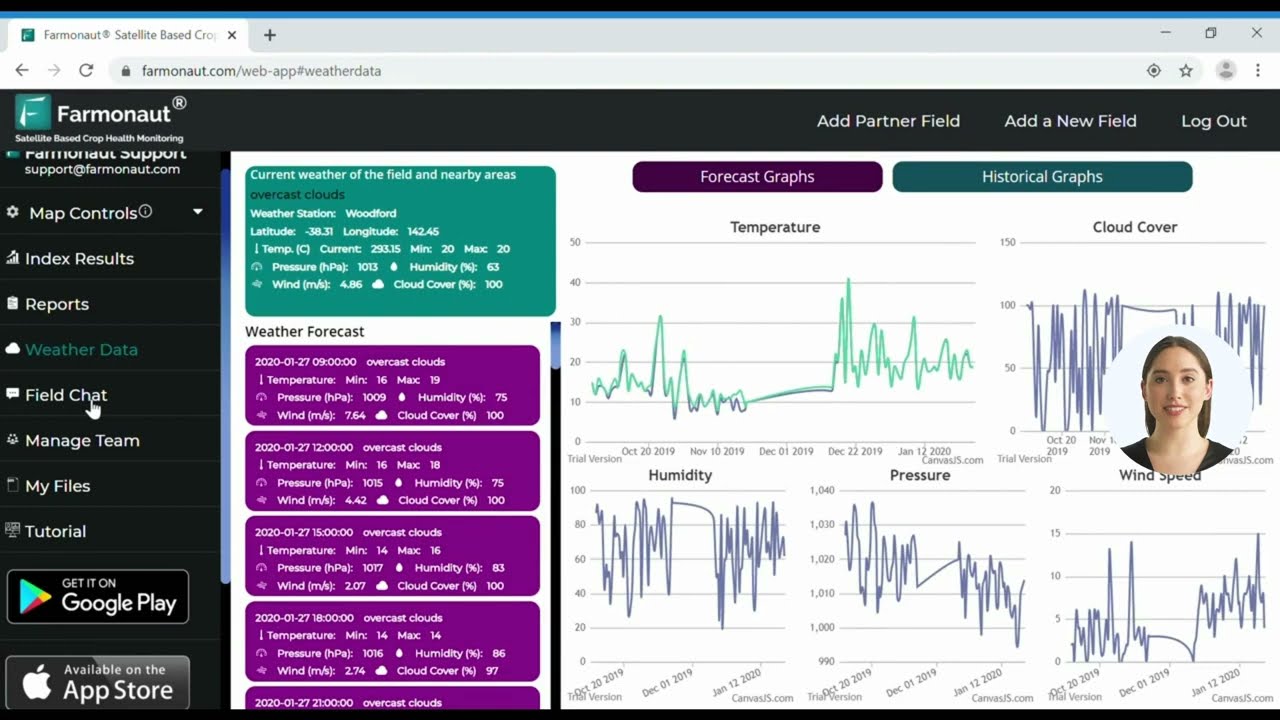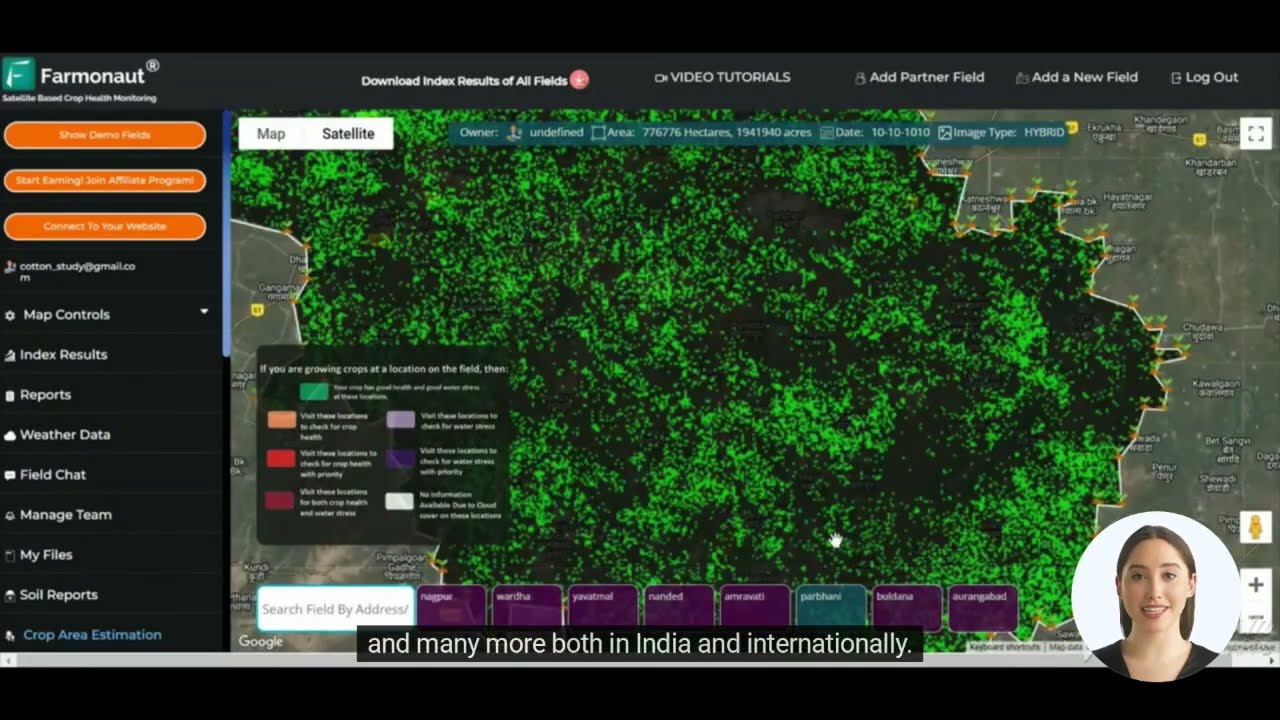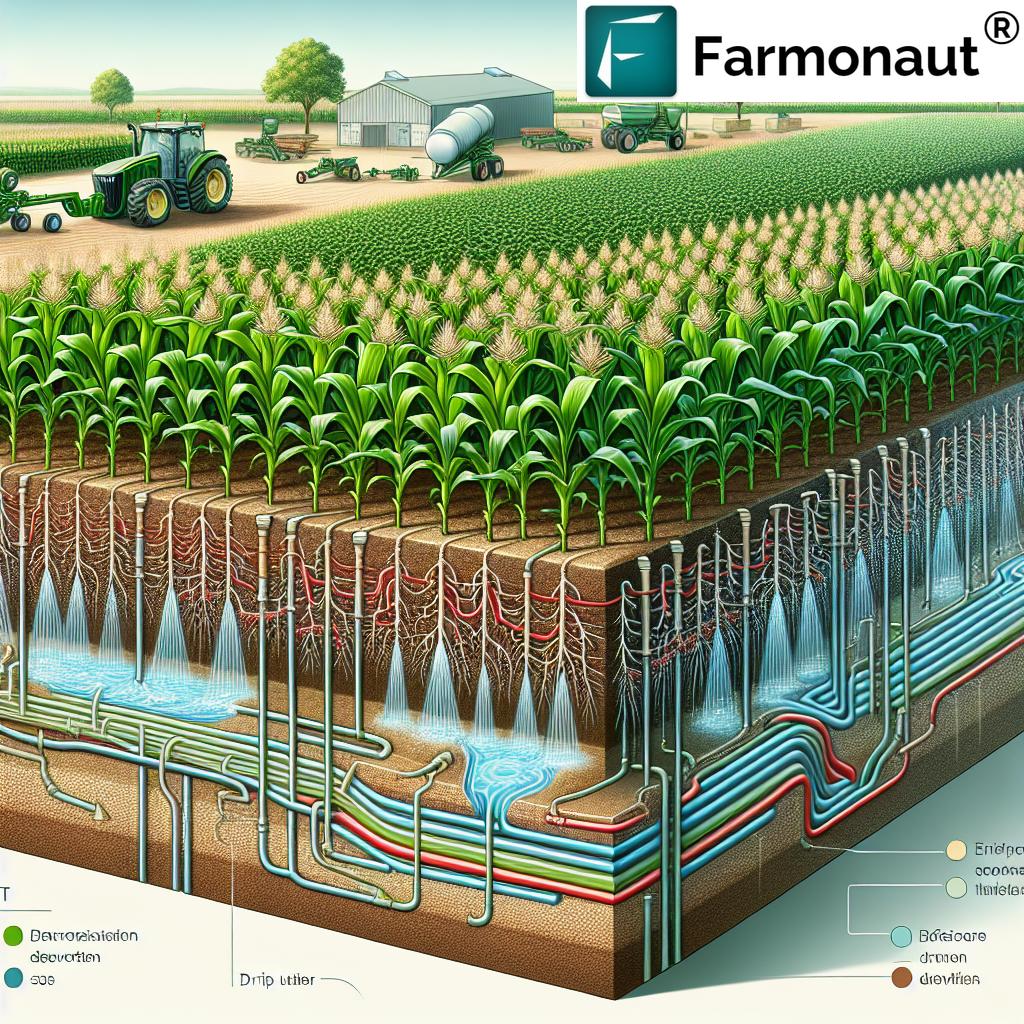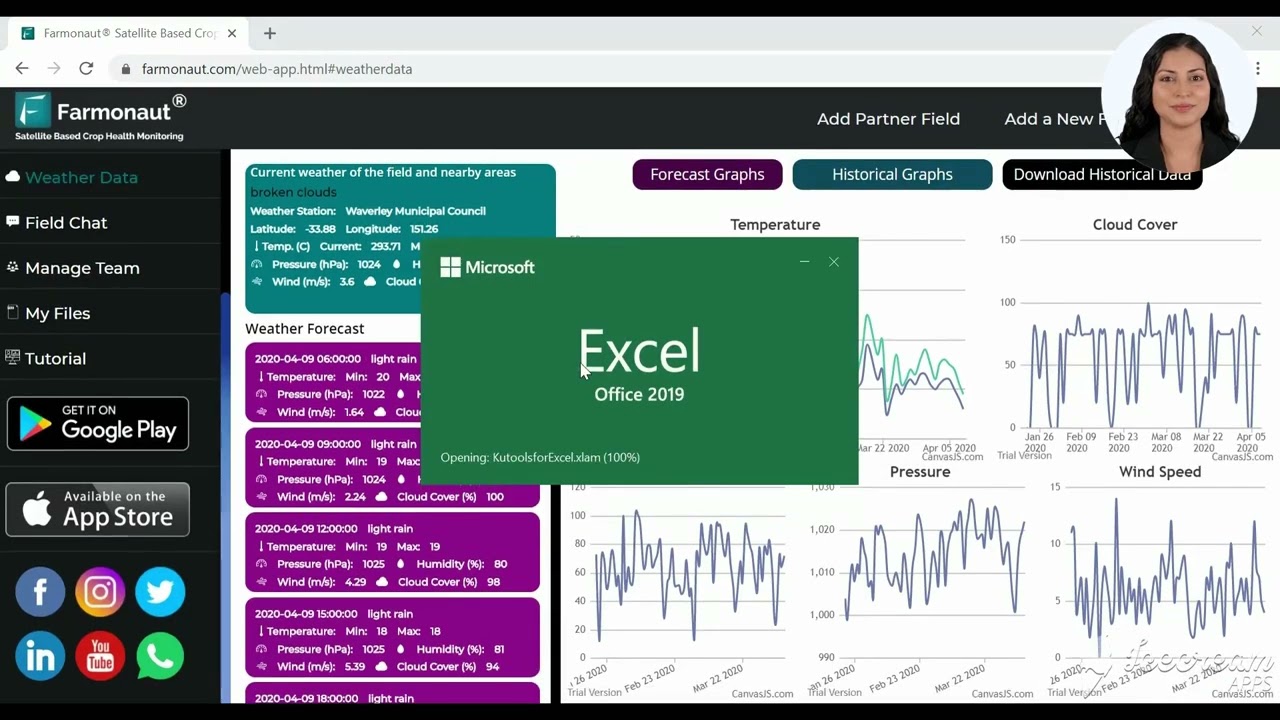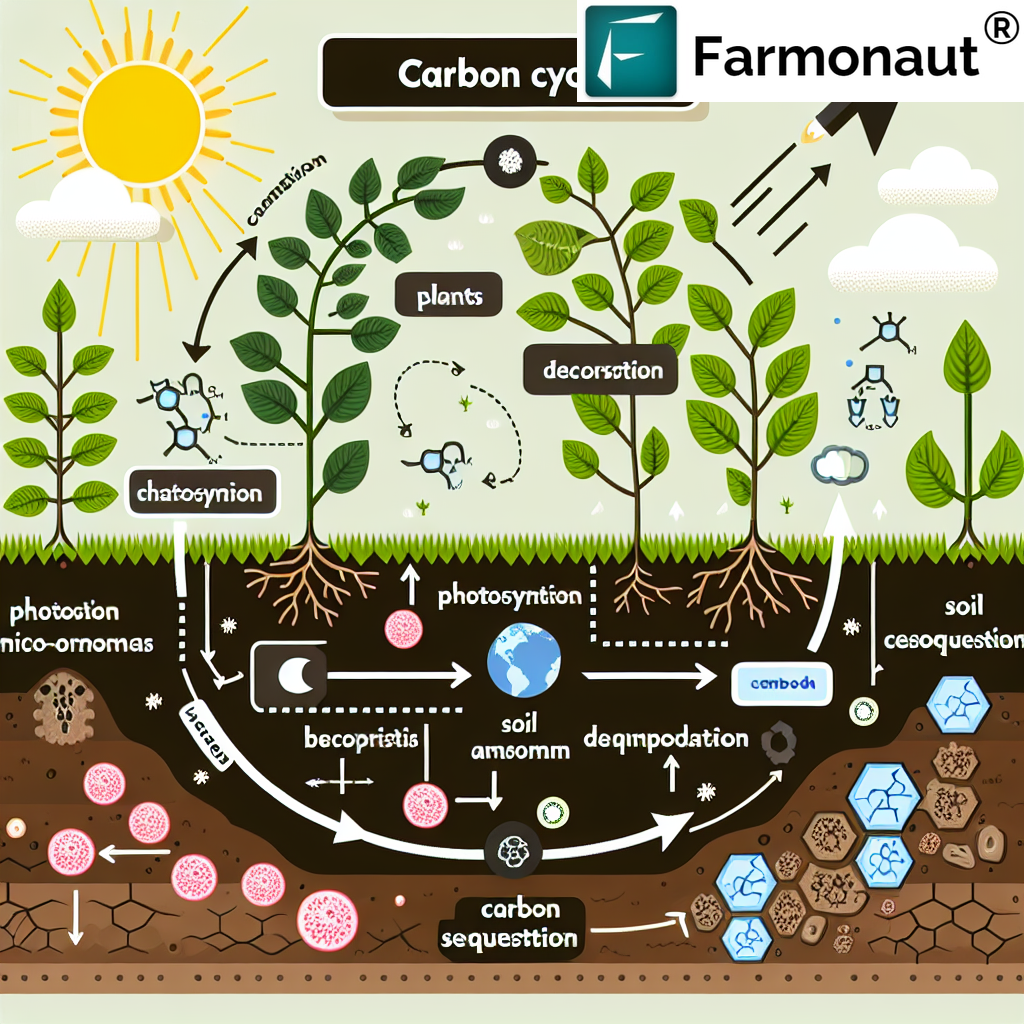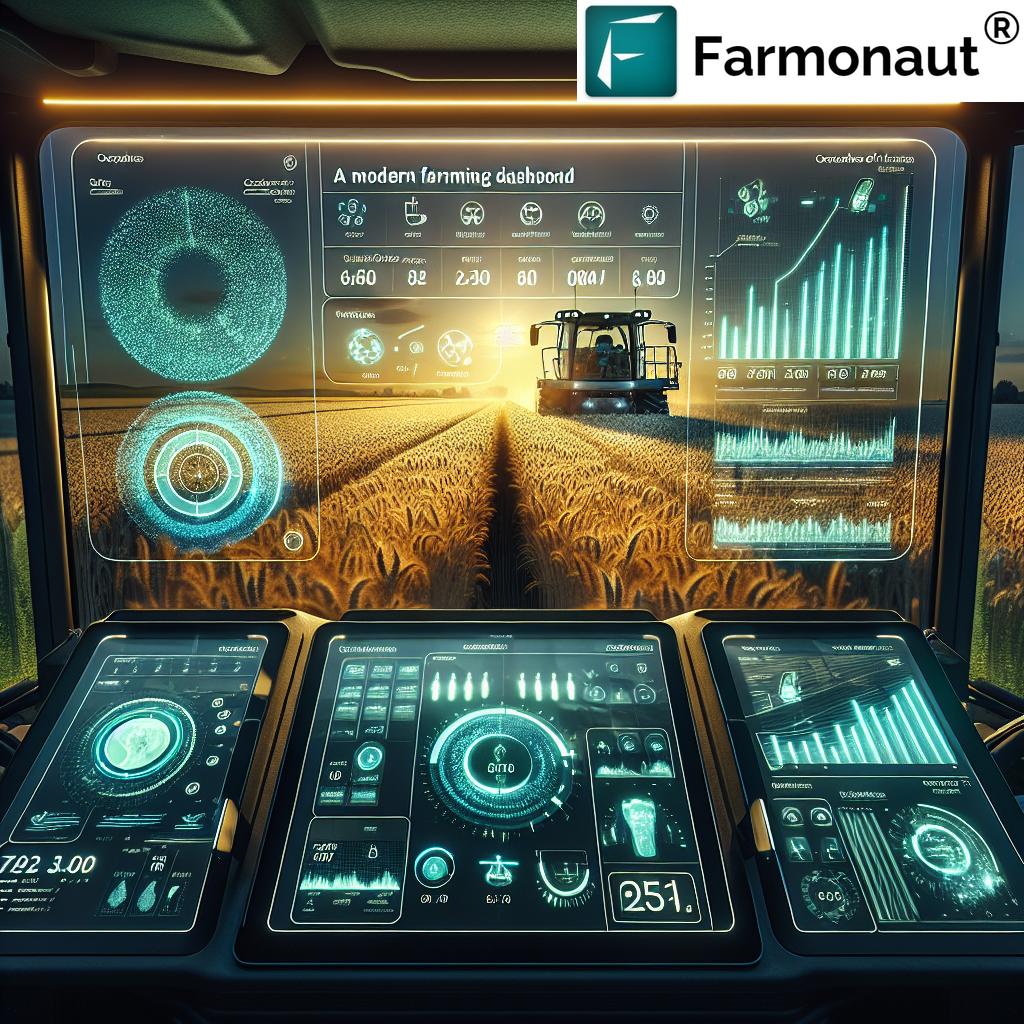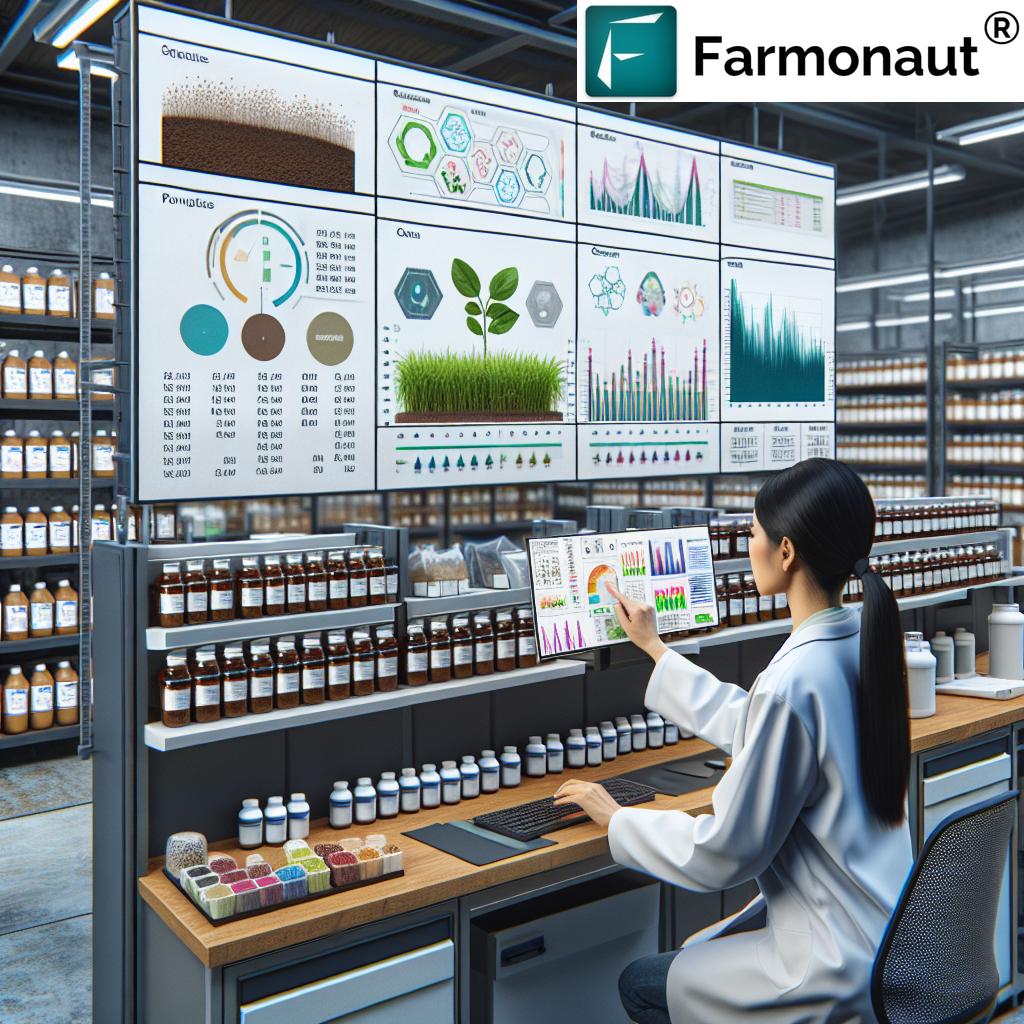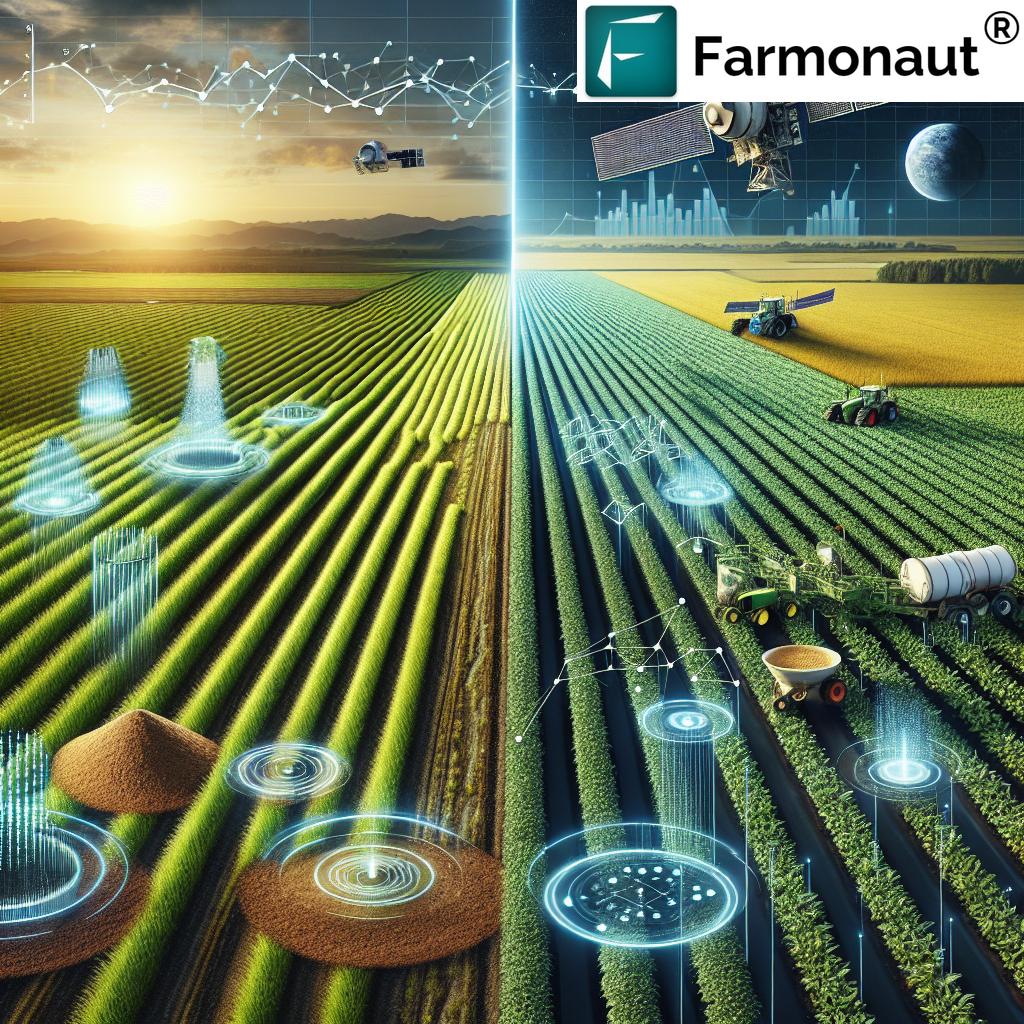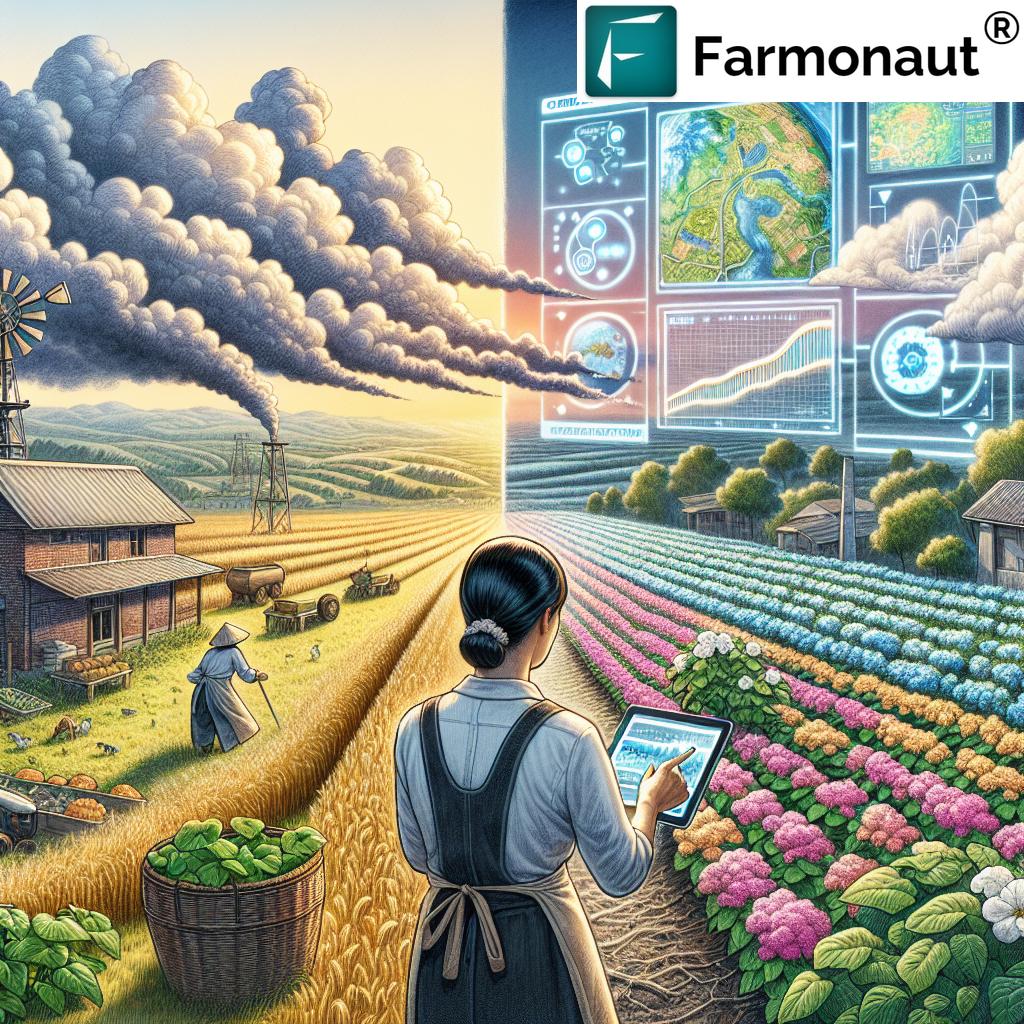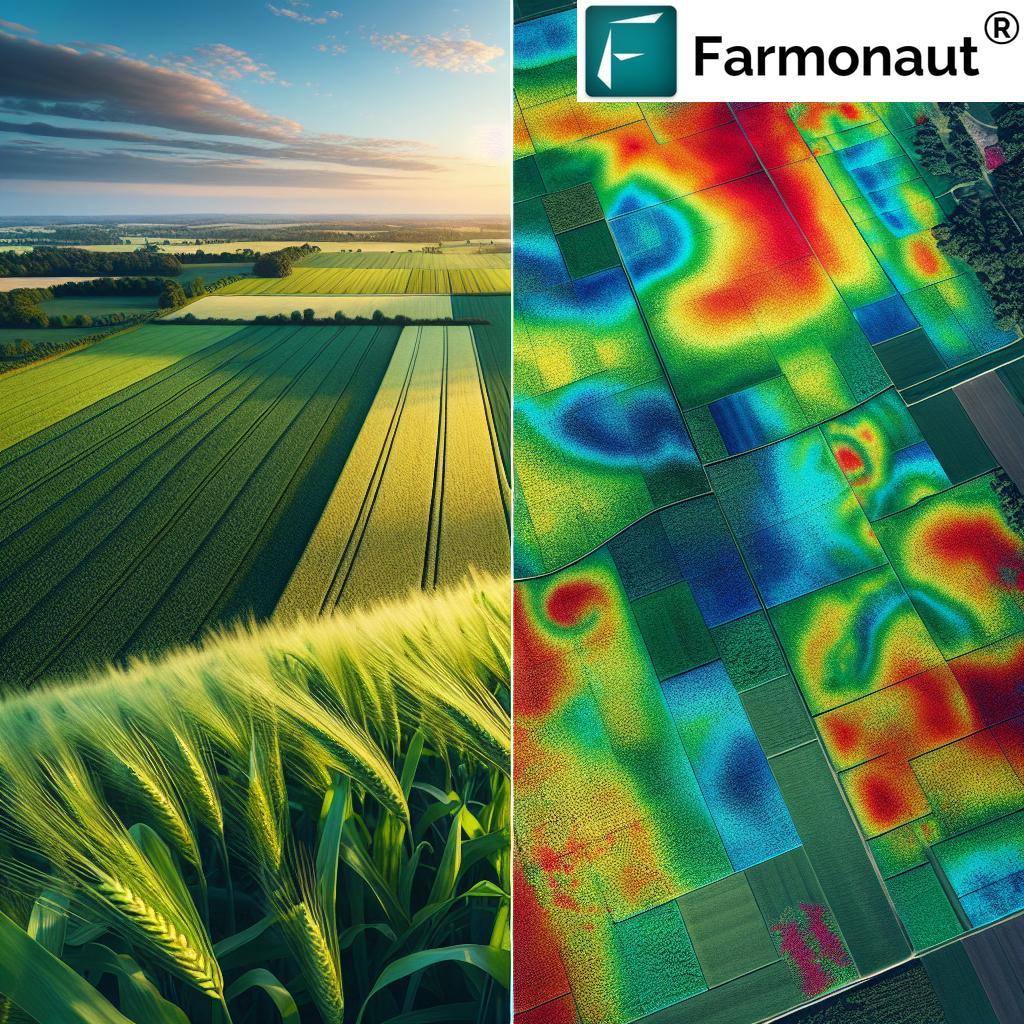Corn Irrigation: 5 Innovative Systems Boosting Yields Today
Table of Contents
- Importance of Corn Irrigation
- Common Irrigation Methods for Corn
- Comparative Features Table of Corn Irrigation Systems
- Factors Influencing Irrigation System Selection
- Innovative Irrigation Technology in Agriculture
- Farmonaut Solutions for Improving Corn Yields with Irrigation
- Challenges in Corn Irrigation Management
- Best Irrigation Methods & Practices for Corn
- Farmonaut Subscription Plans
- FAQ: Corn Irrigation Systems
- Conclusion & Key Takeaways
The Importance of Corn Irrigation: Ensuring Optimal Growth & Yields
Corn, also known as maize, stands as a staple crop in modern agriculture, with a substantial role in global food security, biofuel production, and animal feed. Ensuring optimal growth and maximizing yields hinges critically on adequate and consistent water management. We cannot overlook the vital role of effective irrigation methods—especially in areas where rainfall is insufficient or unpredictable.
Water is a critical component that every phase of corn growth depends on, from germination and vegetative stages to silking and grain filling. During dry spells and in arid regions, irrigation becomes indispensable to maintain crop health, productivity, and resilience against environmental stresses.
When we talk about improving corn yields with irrigation, it means striking the right balance between water application, soil moisture levels, and the demands of the developing plant. Too little water can inhibit growth and leave ears underdeveloped, while excessive water can trigger waterlogging and root diseases—a strong illustration of why managing water for corn crops is an essential, ongoing process.
Common Corn Irrigation Methods: Which System Is Right for Your Fields?
Corn irrigation systems offer various ways to supply water, each with distinct benefits, challenges, and suitability for different terrains and resource conditions. Let’s explore the best irrigation methods for corn in detail, focusing on their technology, efficiency, and role in ensuring high yields.
1. Center Pivot Irrigation
Center pivot irrigation is a technologically advanced method involving a rotating sprinkler system mounted on wheeled towers, which move in a circular pattern around a central pivot point. It is an efficient system for covering large, flat fields and is especially prevalent in the U.S. Midwest.
- How it works: Water is supplied from a central source and distributed through a pipeline mounted on towers. As the towers rotate, sprinklers apply water uniformly over the circular field.
- Pros: High efficiency, labor-saving, precise scheduling, minimal waste.
- Cons: Significant initial investment, less effective on uneven or irregularly shaped terrains.
Learn more about center pivot systems
2. Subsurface Drip Irrigation (SDI) for Corn
Subsurface drip irrigation for corn delivers water directly to the root zone via a network of buried tubes (SDI). This method is highly efficient, as it minimizes evaporation and runoff while ensuring consistent moisture for optimal crop growth.
- Key Features: Water is applied below the surface, right at the roots, leading to less weed pressure and disease risks.
- Advantages: Increased yields, reduced water usage, improved nutrient delivery.
- Challenges: Higher upfront costs, requires careful maintenance to prevent clogging.
See more about SDI in Nebraska
3. Furrow Irrigation
Furrow irrigation is a traditional, gravity-based method used in many maize-growing areas, including sandy soils of Western Nebraska.
- Method: Water flows through small channels (furrows) dug between corn rows, seeping into the root zone by infiltration.
- Pros: Lower initial costs, simple design, minimal mechanical needs.
- Cons: Water distribution can be uneven, prone to waterlogging and runoff, less suitable for slopes or non-uniform fields.
Read about furrow irrigation in Nebraska
4. Drip Irrigation for Maize
Drip irrigation for maize supplies water directly to each plant’s root via emitters and a network of tubes. Modern drip systems ensure efficient use of water and nutrients, conserving resources.
- Features: Flexible installation, can be surface or subsurface, adaptable to uneven terrains.
- Benefits: Savings in water and fertilizer, lower risk of disease, increased yields.
- Care: Regular inspection and careful management to prevent clogging.
See full details on drip irrigation
5. Subsurface Textile Irrigation (SSTI)
A cutting-edge approach, subsurface textile irrigation (SSTI) utilizes geotextile materials placed below the soil surface. SSTI delivers water uniformly across the root zone, further reducing evaporation, runoff, and resource wastage.
- Innovation: Geotextiles distribute water evenly horizontally, avoiding channeling and dry spots.
- Advantages: High uniformity, water savings, ideal for sustainable intensification.
- Applications: Highly effective for premium maize production, especially where sustainability is a top concern.
Comparative Features Table: Corn Irrigation Systems at a Glance
To help you decide which irrigation method suits your goals, field size, and resource levels, we have compiled a comparative analysis table below.
| System Name | Technology Used | Estimated Water Savings (%) |
Estimated Yield Increase (%) |
Initial Investment ($) | Operational Complexity | Suitability for Maize Farms |
|---|---|---|---|---|---|---|
| Center Pivot Irrigation | Rotating Sprinkler System on Wheeled Towers | ~20–35% | ~10–20% | High (>$60,000 for 50 ha) | Medium | Large, Flat Fields |
| Subsurface Drip Irrigation (SDI) | Buried Tubes & Emitters Delivers Directly to Root Zone | 35–45% | 20–35% | High (~$3,000–5,000/ha) | High (Maintenance Intensive) | Small/Medium Fields, Variable Topography |
| Furrow Irrigation | Gravity-Fed Water in Trenches (Furrows) Between Rows | 10–20% | 5–10% | Low ($200–500/ha) | Low | Small/Large, Flat Fields, Sandy Soils |
| Drip Irrigation | Surface/Subsurface Tubes with Precise Emitters | 30–40% | 20–30% | Medium (~$800–2,000/ha) | Medium | Small/Medium, All Terrains |
| Subsurface Textile Irrigation (SSTI) | Geotextile Networks Placed in Root Zone | 40–50% | 25–40% | High (~$4,000–8,000/ha) | High | Medium/Large, Premium or Sustainable Maize Farms |
“Precision irrigation systems can save up to 40% water while maintaining optimal maize growth.”
Factors Influencing Irrigation System Selection for Maize
Selecting the right irrigation system involves several interrelated factors. Let’s evaluate the prominent factors influencing irrigation system selection for corn:
- Water Availability: Determine local rainfall, groundwater levels, and seasonal water security. Water-scarce regions favor efficient systems, such as SDI and drip irrigation.
- Soil Type: Sandy or loamy soils have lower water retention and benefit from frequent, smaller applications (ideal for drip and SDI), while heavier soils may suit furrow or pivot systems.
- Field Topography: Flat fields are optimal for center-pivot irrigation. Uneven terrains need flexible systems like drip or subsurface.
- Financial Investment & Operational Costs: Account for both setup and ongoing costs. High-tech systems bring efficiency but also higher initial investments and need for regular upkeep.
- Labor and Maintenance: Some systems are automated and easy to manage (pivot, smart irrigation), while others (furrow, SDI) may require significant manual labor or expert care for maintenance and operation.
- Farm Size & Layout: Larger, uniform fields maximize returns for pivot and SSTI, while smaller, fragmented fields often benefit more from drip or furrow.
- Crop Type & Rotation: Maize is adaptable but needs consistent, deep-root-zone moisture for peak productivity; frequent crop rotation may make flexible systems more attractive.
For corn farmers, matching the irrigation method to the unique needs of your field is the first step in ensuring balanced growth, resource savings, and resilience for years to come.
Innovative Irrigation Technology in Agriculture: Smarter Ways to Water Corn
The drive for higher corn yields and water efficiency continues to inspire cutting-edge innovations in farm irrigation. These innovative irrigation technologies not only save money and resources but foster sustainable, precision-focused agriculture, aligning with global trends in environmental stewardship and profitability.
Smart Irrigation Systems
Smart irrigation integrates soil moisture sensors, automated controllers, and AI-powered data analytics to deliver water only when and where it’s needed—reducing wastage, cutting costs, and improving corn yields through precision agriculture.
- Leverages real-time data on weather, soil, and plant health to optimize irrigation schedules.
- Remote monitoring and control reduce labor requirements and operational mistakes.
- Direct compatibility with large-scale farm management platforms for seamless, integrated field management.
Subsurface Textile Irrigation (SSTI)
SSTI is gaining rapid popularity among forward-thinking farmers for its environmental credentials and technological sophistication.
- Water flows through underground geotextile networks for even, root-zone-specific application.
- Helps prevent soil erosion, salinization, and runoff, all while maximizing water efficiency.
- Can be paired with satellite-based monitoring and remote controls for full-system automation.
Satellite-Based Crop Monitoring & AI Advisory
Platforms such as Farmonaut empower users with satellite-based crop health monitoring, AI-driven irrigation advisories, and real-time weather data. This precision technology:
- Detects soil moisture fluctuations, plant stress, and potential waterlogging before problems worsen.
- Guides farmers using actionable insights and mobile/web app notifications.
- Supports better planning, scheduling, and response to environmental variability.
Modern API integration options let agribusinesses and tech developers access these satellite and weather tools directly. Explore the Farmonaut API to integrate irrigation intelligence into your custom farm software.
For development documentation and reference, see: API Developer Docs.
Farmonaut Solutions: Enhancing Irrigation Efficiency with Technology
We believe that modern corn irrigation systems must combine proven agricultural methods with cutting-edge technology. Farmonaut’s satellite-based platform is designed to make precision irrigation accessible and affordable for all farm sizes—from smallholders in Western Nebraska to large corporate maize plantations across the globe.
Key Features:
- Crop Health Monitoring: Multispectral satellite imagery tracks field health, identifying dry spots, waterlogging, and uniformity of irrigation directly from your web or mobile device.
- Soil Moisture & NDVI Indices: Farmonaut’s algorithms flag areas with inadequate or excess water, providing actionable recommendations to optimize maize irrigation frequency and volume.
- AI-Based Advisory: The Jeevn AI advisory system delivers real-time, season-specific insights for maximizing yields, including when to irrigate, how much water to apply, and maintenance reminders for your preferred system.
- Blockchain Traceability: Transparency in supply chains begins with the field. See how Farmonaut’s traceability solution proves the origin of sustainably irrigated maize, benefiting food and textile companies alike.
- Fleet & Resource Management: Maize growers with mechanized irrigation setups or distributed fields can optimize equipment usage and reduce operational costs via Farmonaut’s fleet management tools.
- Carbon Footprinting: For eco-minded operations, the carbon-footprinting feature tracks emissions savings from advanced irrigation adoption.
By integrating these solutions, farmers can boost efficiency, sustainability, and yields—while reducing water usage, environmental impact, and operational headaches.
Challenges in Corn Irrigation Management: What to Watch Out For
While the right technology can mitigate risks, some challenges in corn irrigation management remain constant:
- Resource Overuse: Over-extraction for irrigation can deplete water tables, harming both farm productivity and the broader environment.
- System Maintenance: Complex systems (SDI, drip, SSTI) need regular inspection and cleaning to prevent clogging, leaks, or mechanical breakdowns.
- Cost-Benefit Dilemmas: High up-front investment may be a barrier for smaller farmers, emphasizing the need for affordable precision solutions.
- Environmental Impact: Mismanaged irrigation leads to waterlogging, soil salinization, and nutrient leaching—reducing field health.
- Labor Requirements: Manual systems are labor-intensive. Automated and remote-monitored technologies reduce workload but require new learning curves.
- Weather Variability: Unpredictable rainfall patterns make scheduling tricky—underscoring the value of integrated, real-time advisory platforms.
Combining data-driven management with strong maintenance routines is our best defense against these persistent challenges.
Best Irrigation Methods & Practices for Corn: Essential Takeaways
No two fields—or farming operations—are alike. However, a blend of innovative irrigation methods, new technology, and proactive management reshapes the future of maize yields.
- Adopt Precision Application: Use drip or SDI for targeted root-zone delivery and highest water use efficiency.
- Monitor Soil & Weather in Real-Time: Use Farmonaut’s satellite platform and sensor integrations to keep an eye on stress points and avoid over/underwatering.
- Automate Where Possible: Consider smart irrigation/remote-controlled pivots to save labor, reduce errors, and maintain consistency—especially in large fields.
- Implement Maintenance Schedules: Regularly check and maintain emitters, pipelines, pumps, and underground systems to prevent clogging and breakdowns.
- Embrace Flexible Scheduling: Tailor your irrigation schedule dynamically based on crop stage, rainfall events, and field observations.
- Think Systems & Sustainability: Integrate irrigation choices with crop rotation plans, nutrient application, and eco-friendly practices. Leverage Farmonaut’s carbon-footprinting monitoring for sustainability tracking.
By incorporating these practices, we can collectively future-proof our maize production—even as climate, regulations, and technologies continue to evolve.
Farmonaut Subscription Plans: Affordable Precision Agriculture
Farmonaut’s subscription model is designed for everyone—from individual farmers and cooperatives to large agribusinesses and government bodies. We ensure cost-effective precision farming services with flexible web, iOS, and Android app access. Scale your subscription as your operations expand. Check pricing below and start transforming your irrigation management today.
FAQ: Corn Irrigation Systems & Efficient Water Management
-
Q: What is the most water-efficient irrigation method for maize?
A: Subsurface drip irrigation (SDI) and drip irrigation systems are generally the most water-efficient, directly delivering water to the root zone and minimizing evaporation. -
Q: Are advanced systems like SDI and SSTI worth the investment?
A: They offer significant water savings, yield gains, and soil health benefits. While they require higher initial capital, the long-term return on investment—especially for water-limited or high-value maize production—is often substantial. -
Q: How can I monitor if my field is getting adequate moisture?
A: Satellite-based platforms like Farmonaut offer real-time NDVI and soil moisture mapping to visually track irrigation effectiveness and spot irregularities early. -
Q: What are the challenges in maintaining modern irrigation systems?
A: Clogging, leaks, and uneven water distribution are main risks. Regular cleaning, filter maintenance, and remote monitoring reduce these issues. -
Q: Where can I find more about sustainable irrigation and carbon savings?
A: Farmonaut’s carbon-footprinting tools offer data on water, energy, and GHG reduction for compliance and brand value. -
Q: Can irrigation technology be integrated with farm traceability?
A: Absolutely. With Farmonaut’s blockchain-based traceability tools, you can record and verify sustainable practices from field to market. -
Q: Which system is best for sandy soils, such as those in Western Nebraska?
A: Furrow and subsurface irrigation systems are traditionally used. However, drip and SDI systems provide more uniform moisture for sandy soils that have fast drainage. -
Q: How can Farmonaut help with large scale plantation management?
A: The Farmonaut large-scale farm management app offers satellite tracking, resource monitoring, and multi-field management—all through a single dashboard.
Conclusion: The Future of Corn Irrigation is Smart, Sustainable & Data-Driven
Corn irrigation is a critical component of modern agriculture. As the global demand for maize grows and climate patterns become more unpredictable, it is essential for us to move beyond traditional, wasteful water practices. By carefully selecting the most suitable irrigation system—from center pivot to smart SDI or SSTI—and embracing data-driven platforms such as Farmonaut, we can maximize yields, conserve water, and protect the environment.
The best irrigation practices:
- Balance water input with soil type and crop needs for optimal moisture.
- Combine advanced technology with experienced management to improve yields and field health.
- Routinely monitor, maintain, and adapt systems to changing climate and operational realities.
- Integrate your irrigation approach with other precision agriculture tools for a unified, scalable, and sustainable solution.
In short, the future of corn farming belongs to those who innovate, optimize, and embrace precision agriculture technology. Join us on this journey towards resilient, high-yield maize production.






